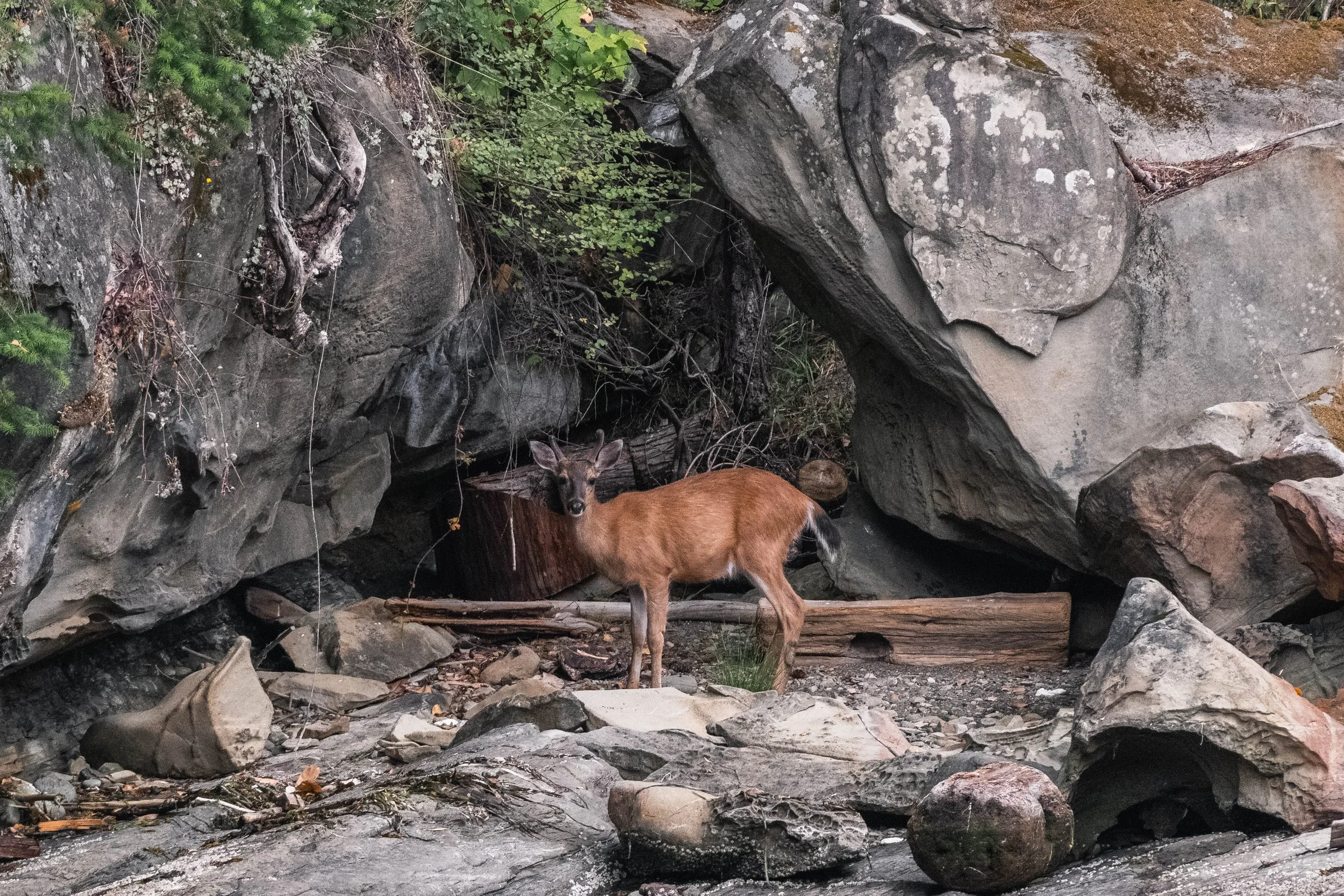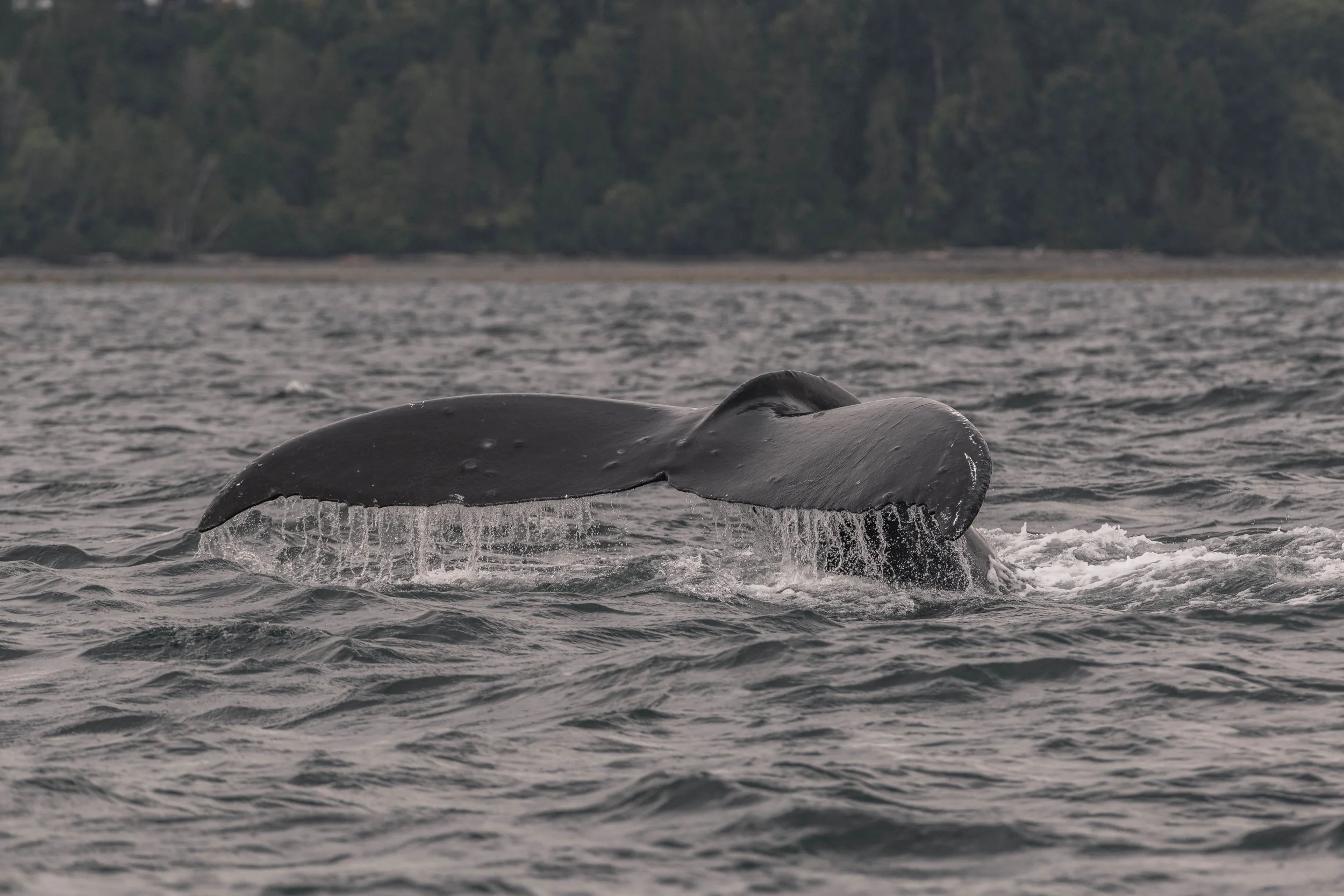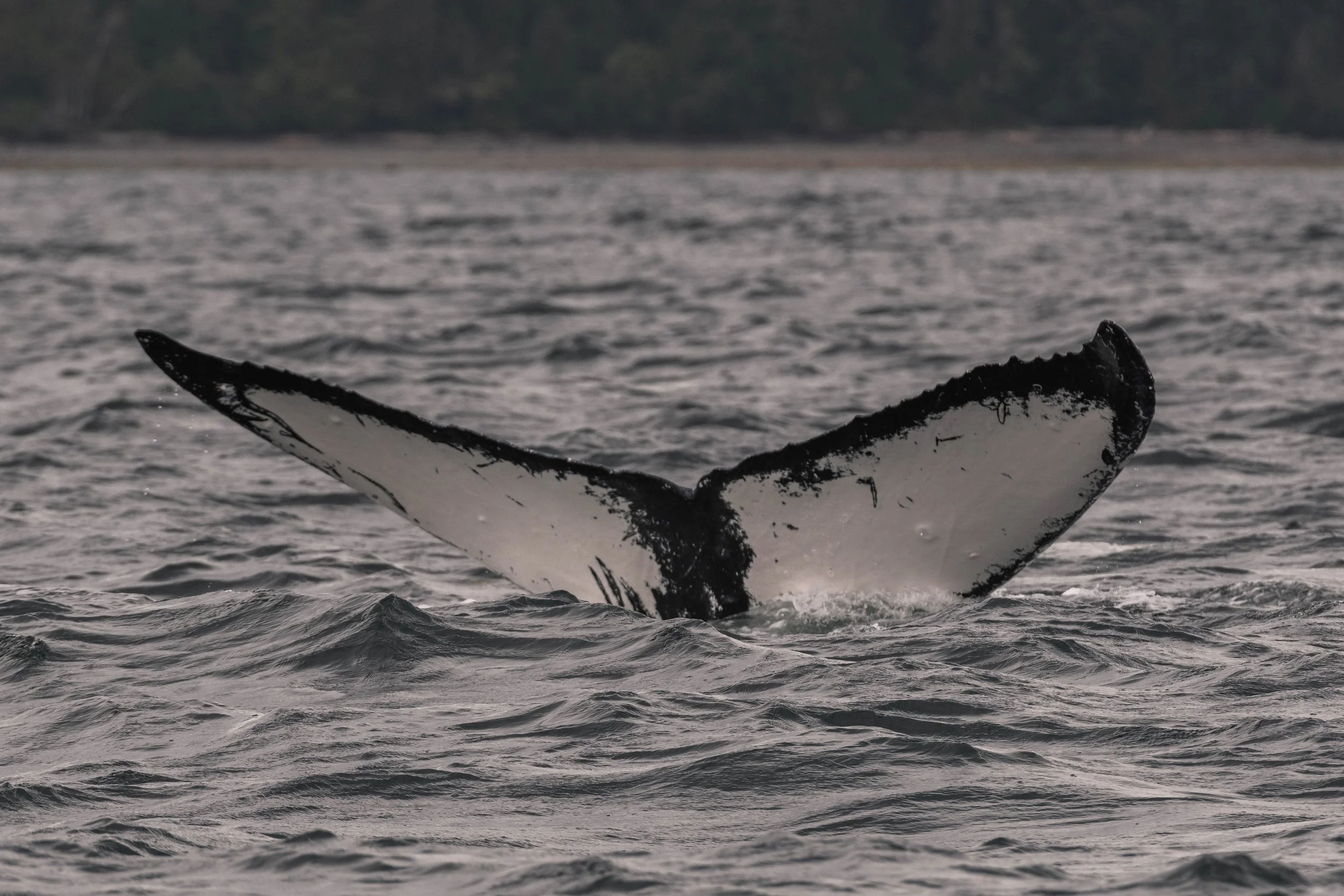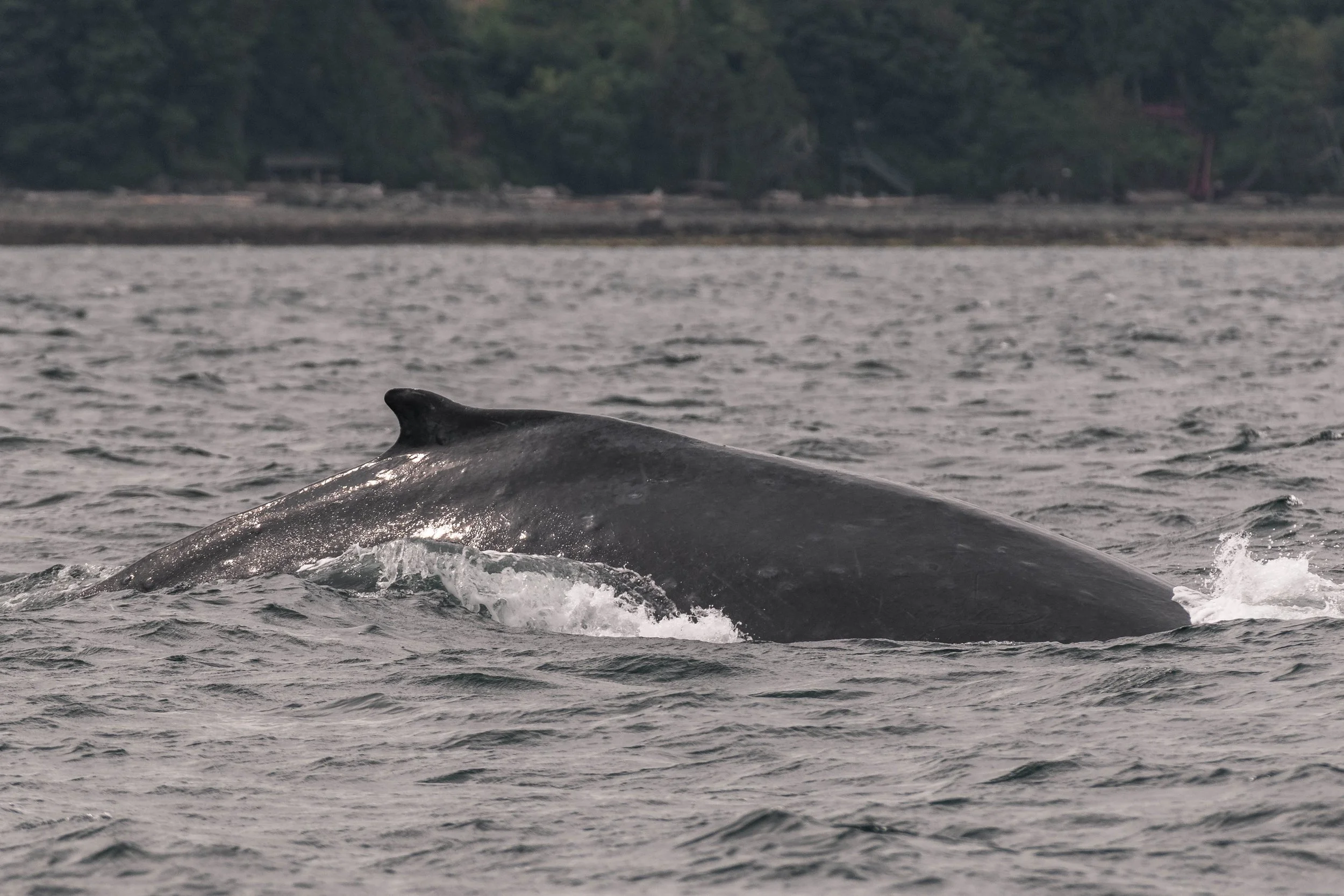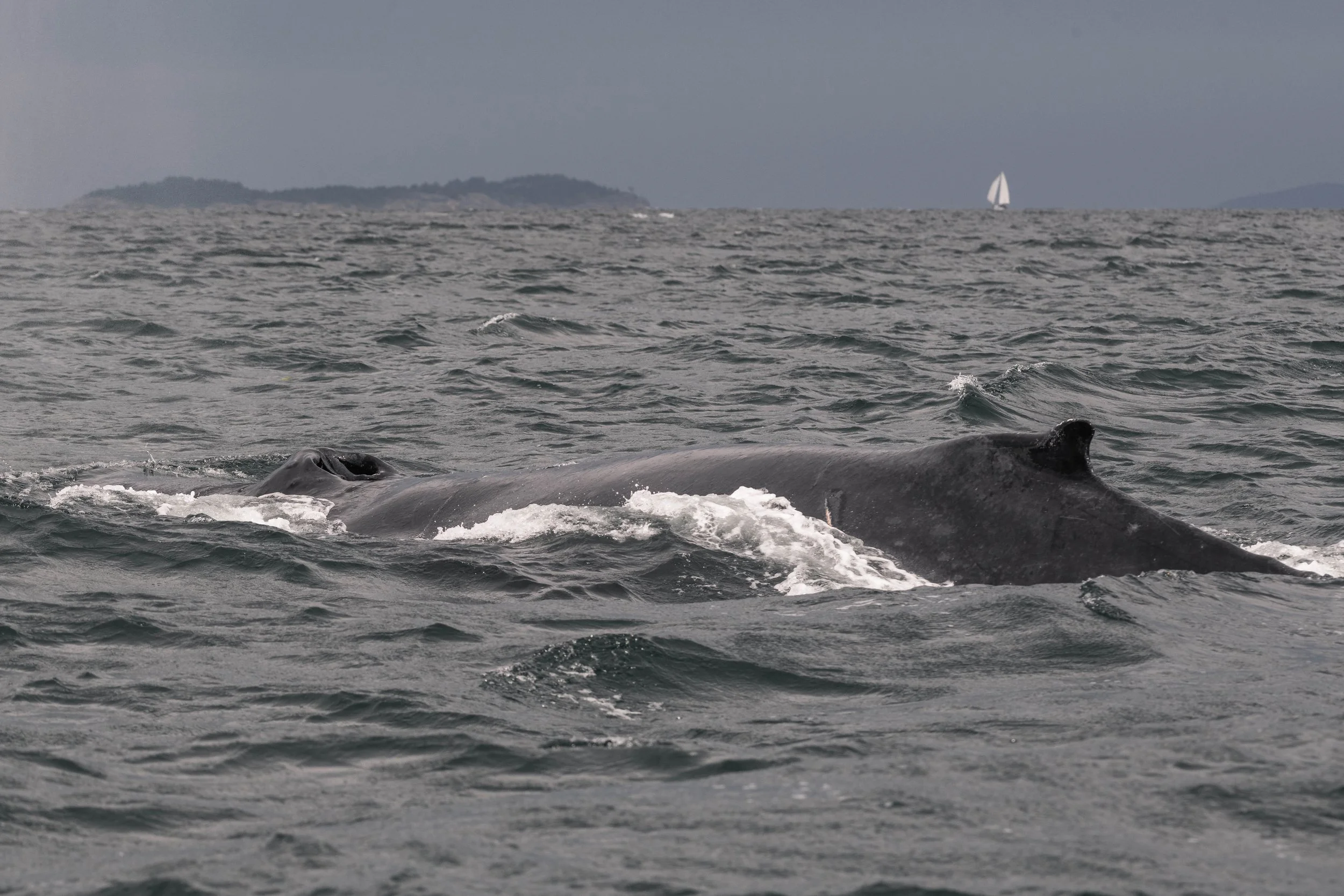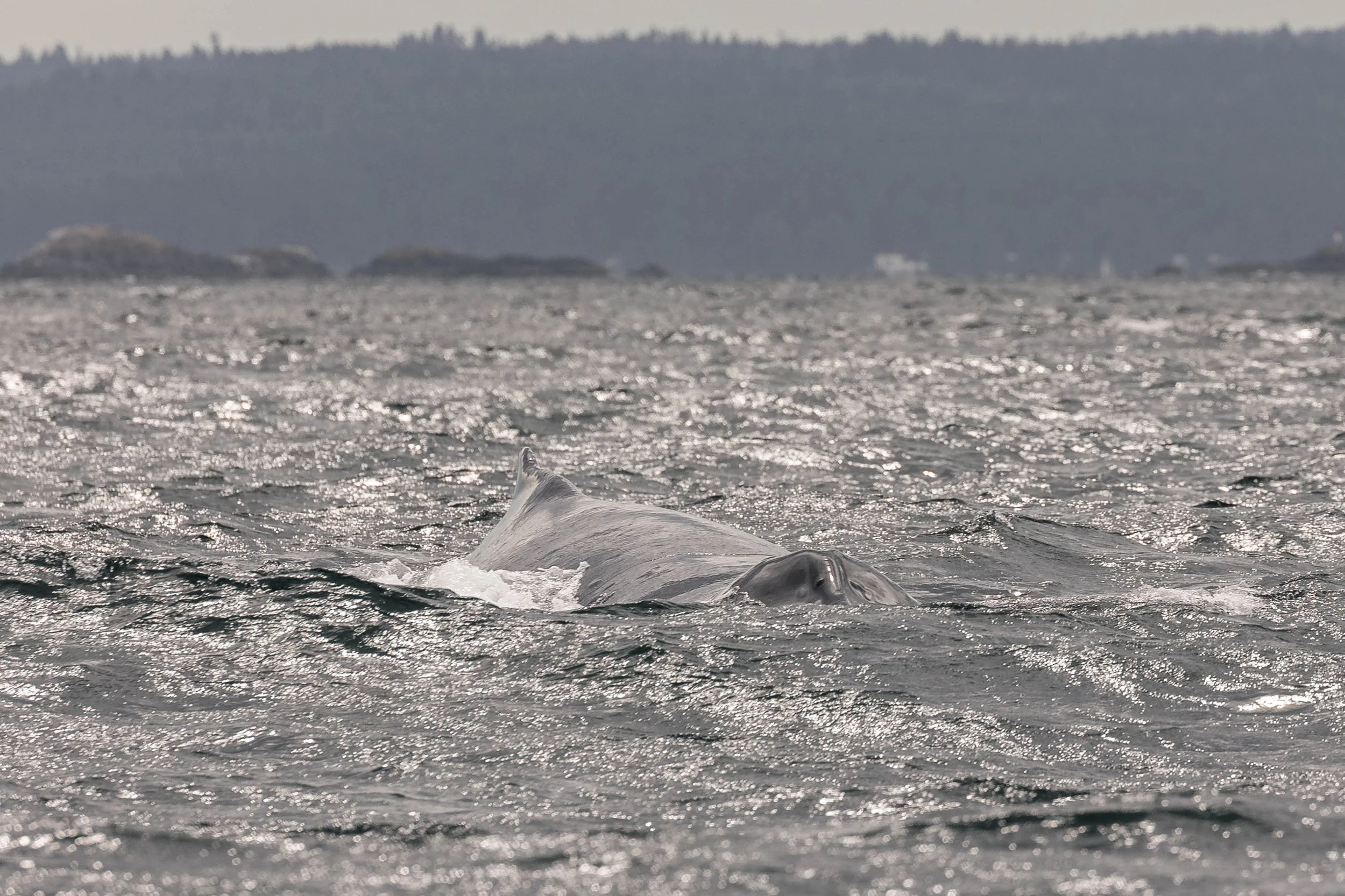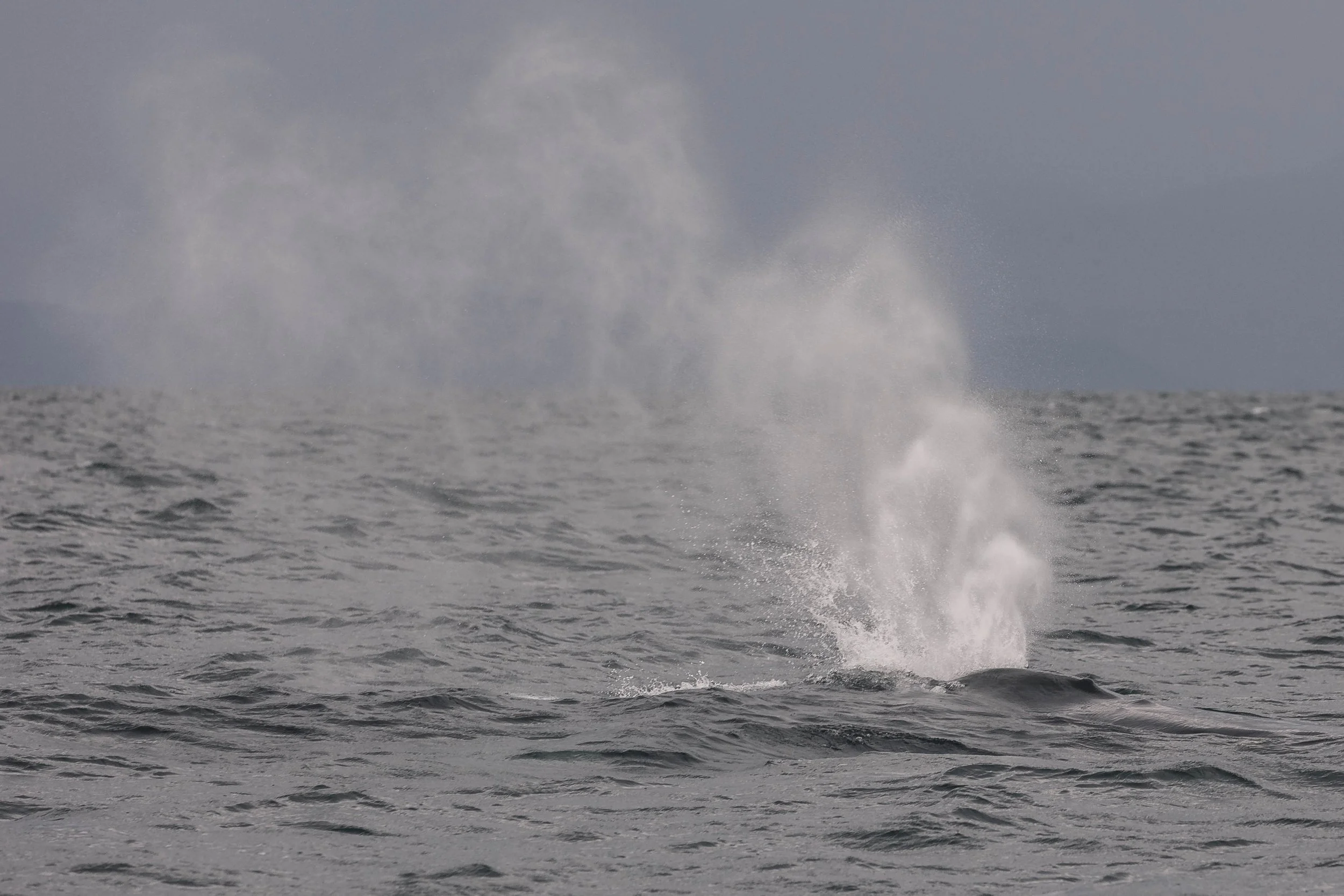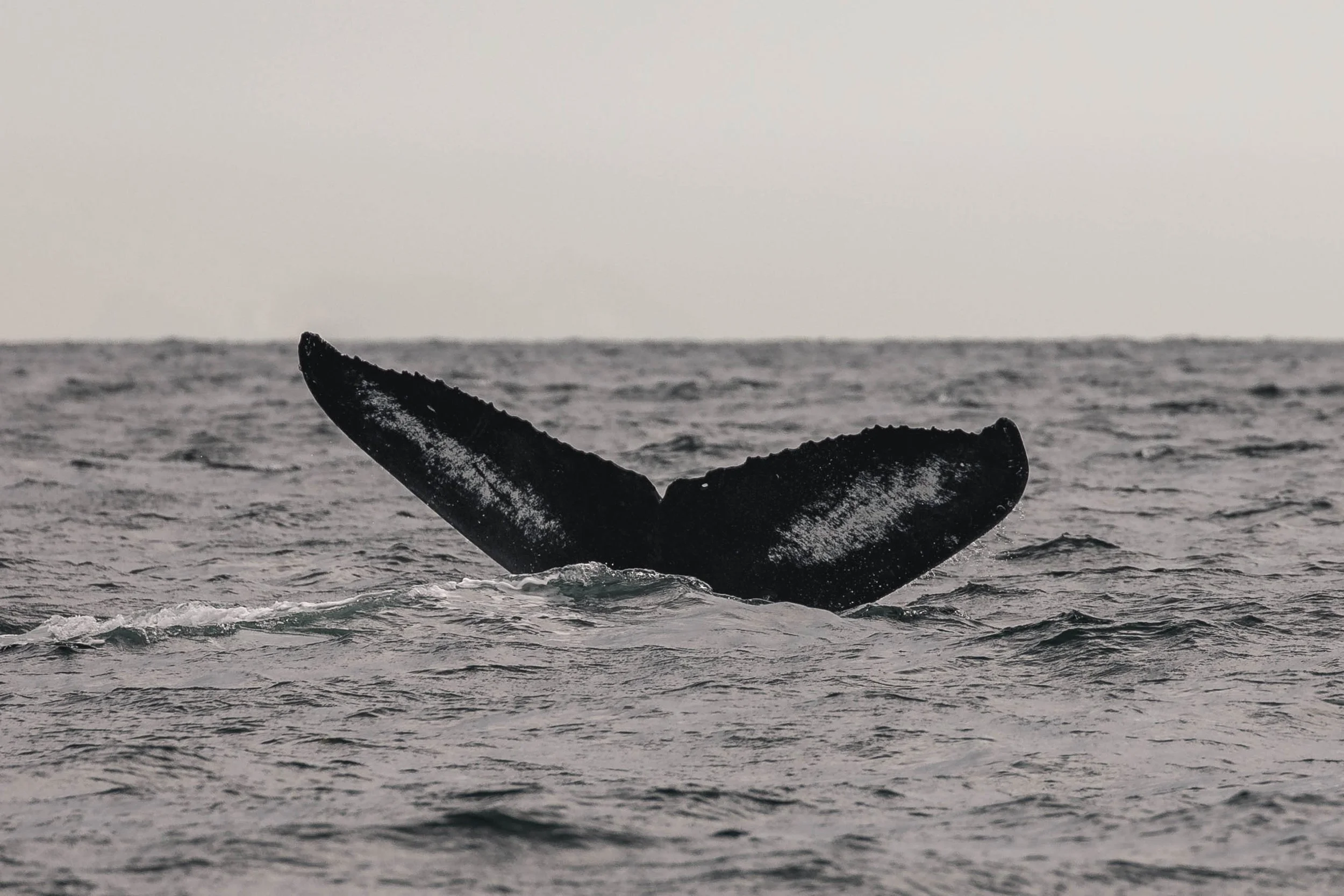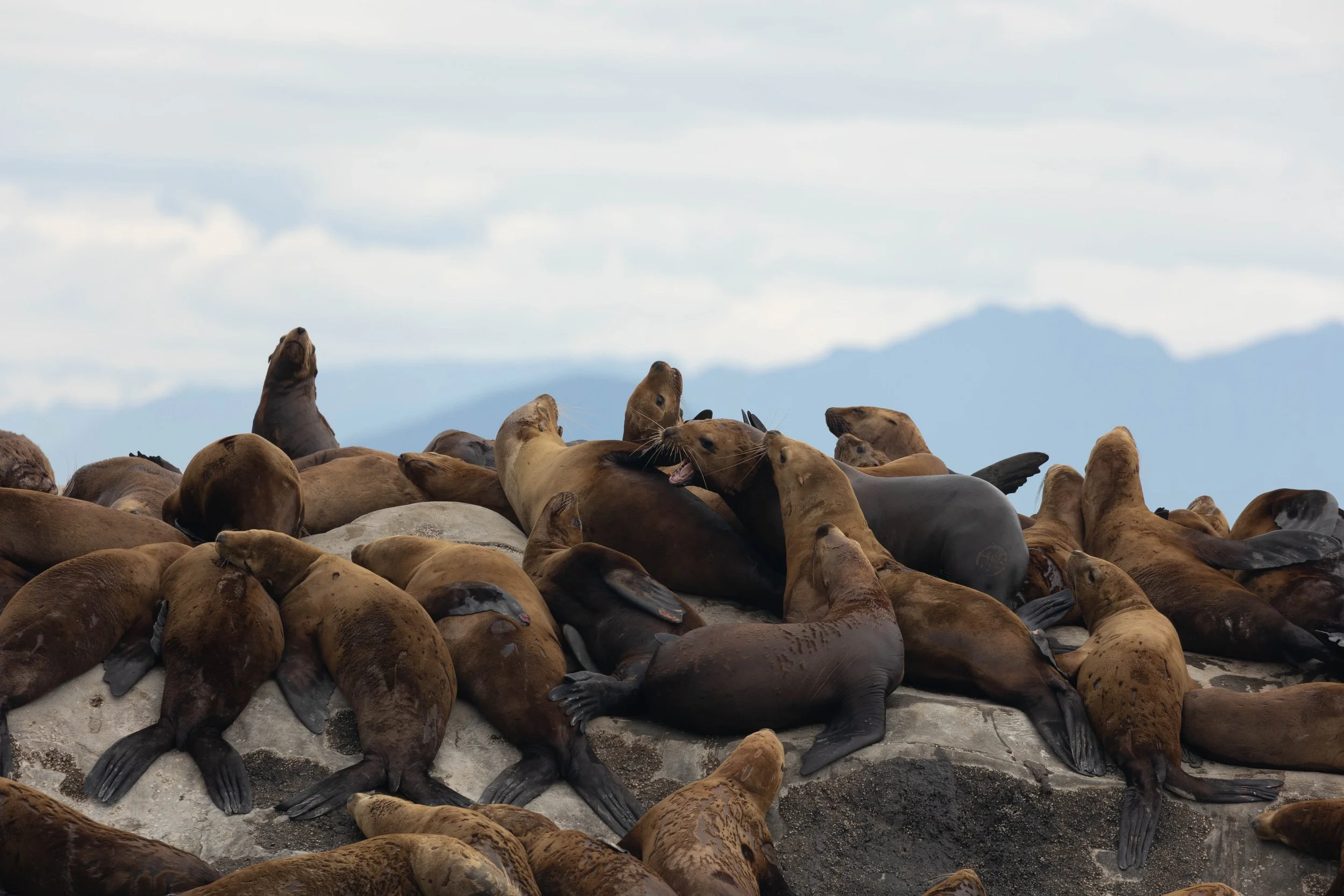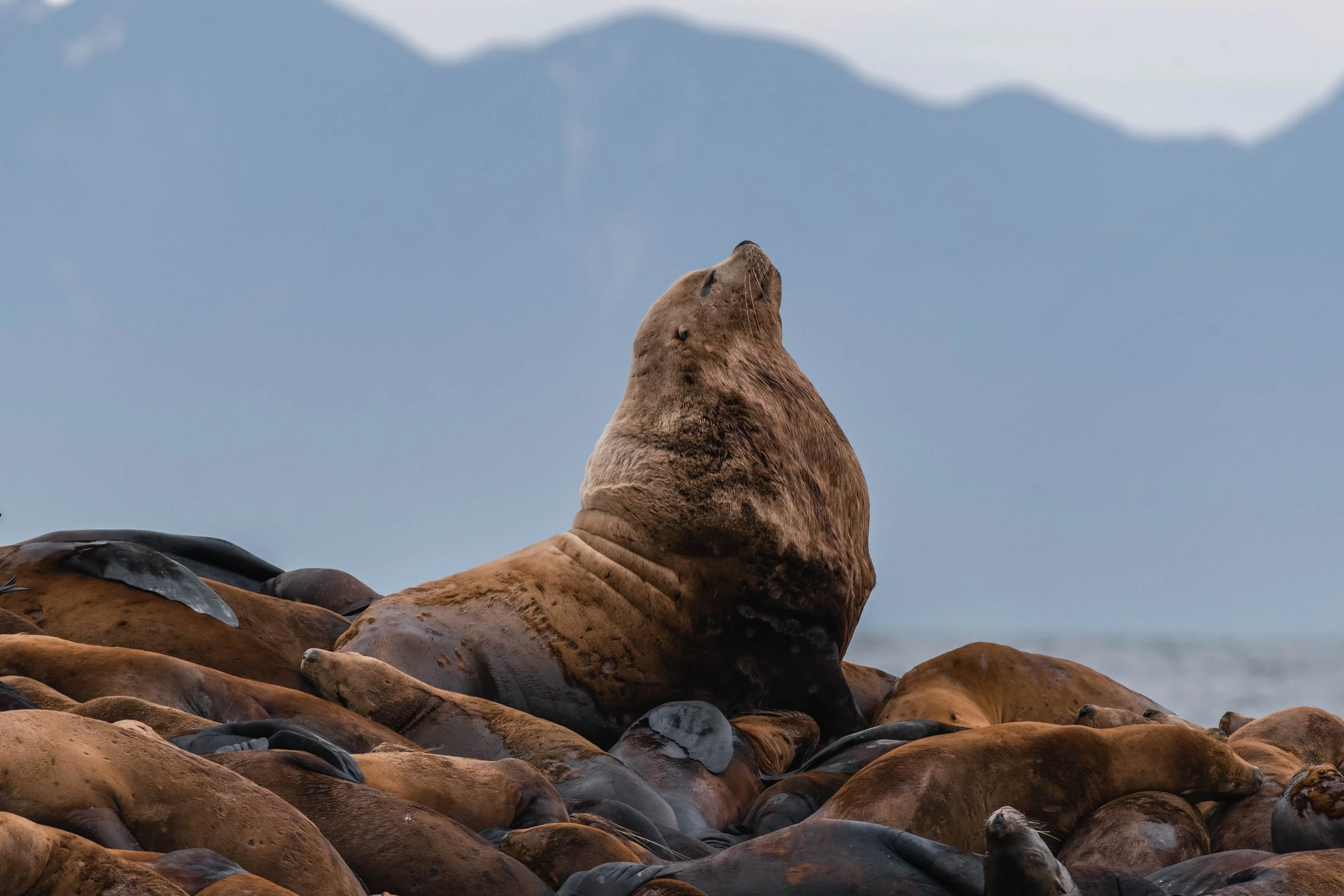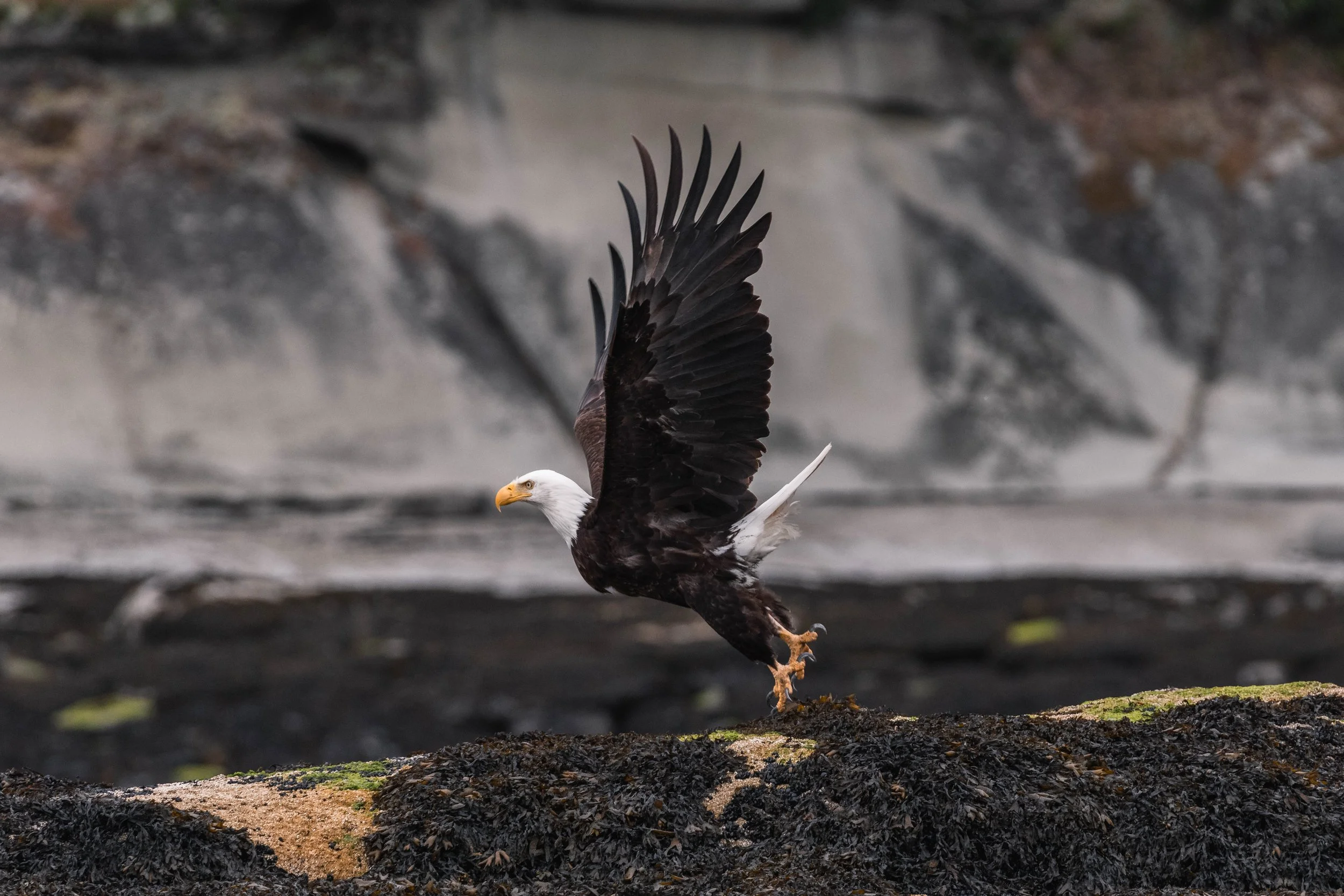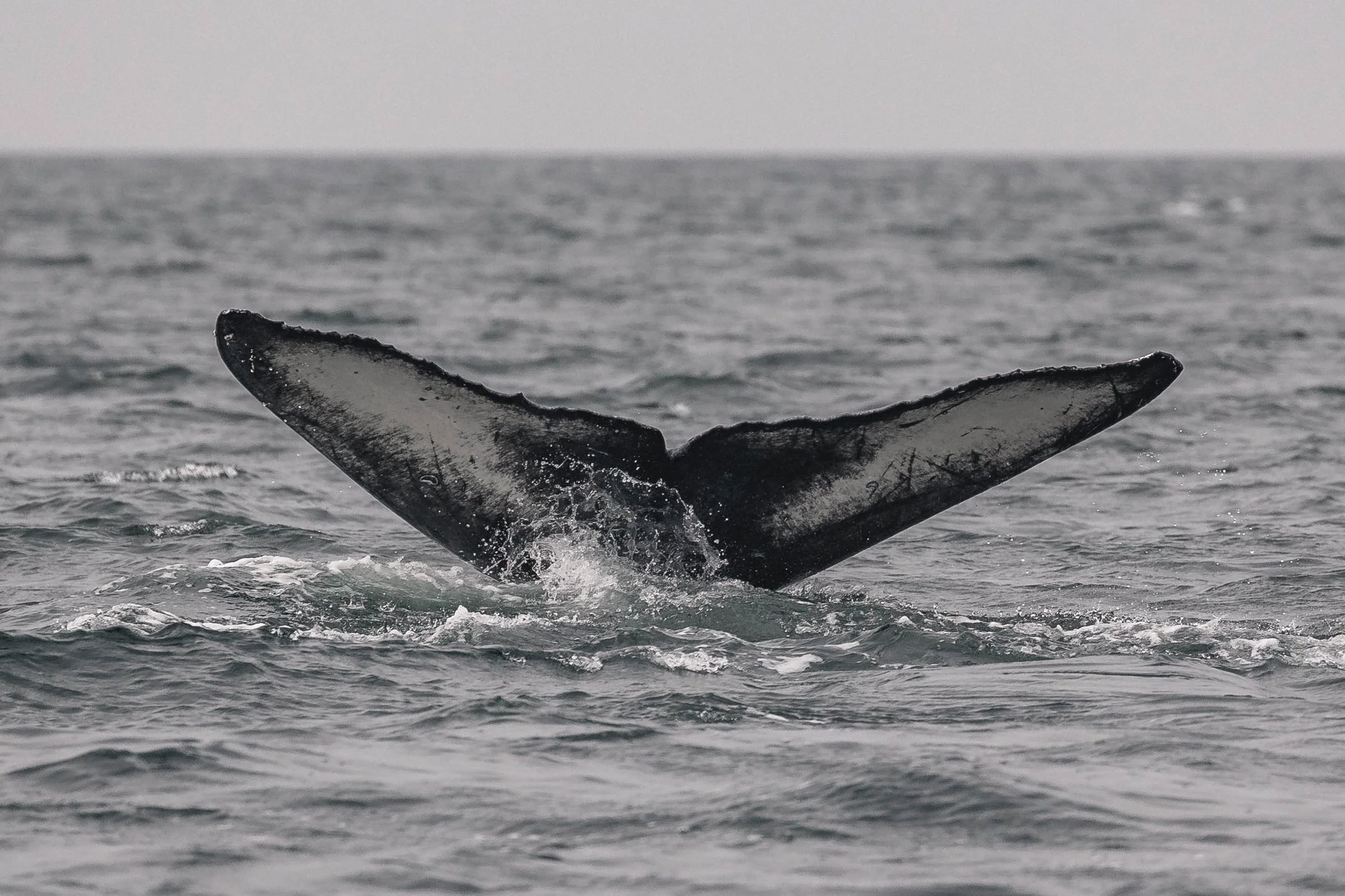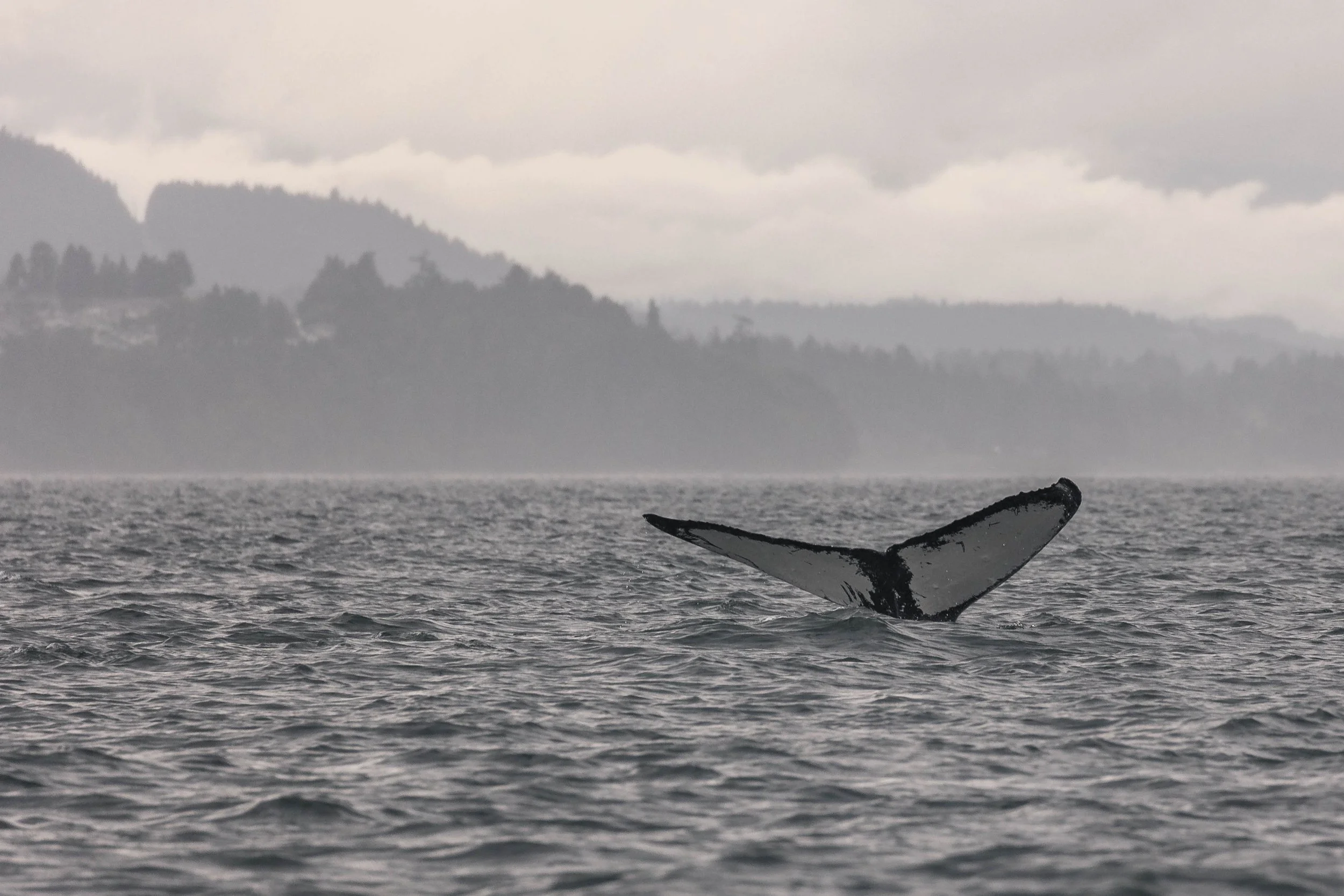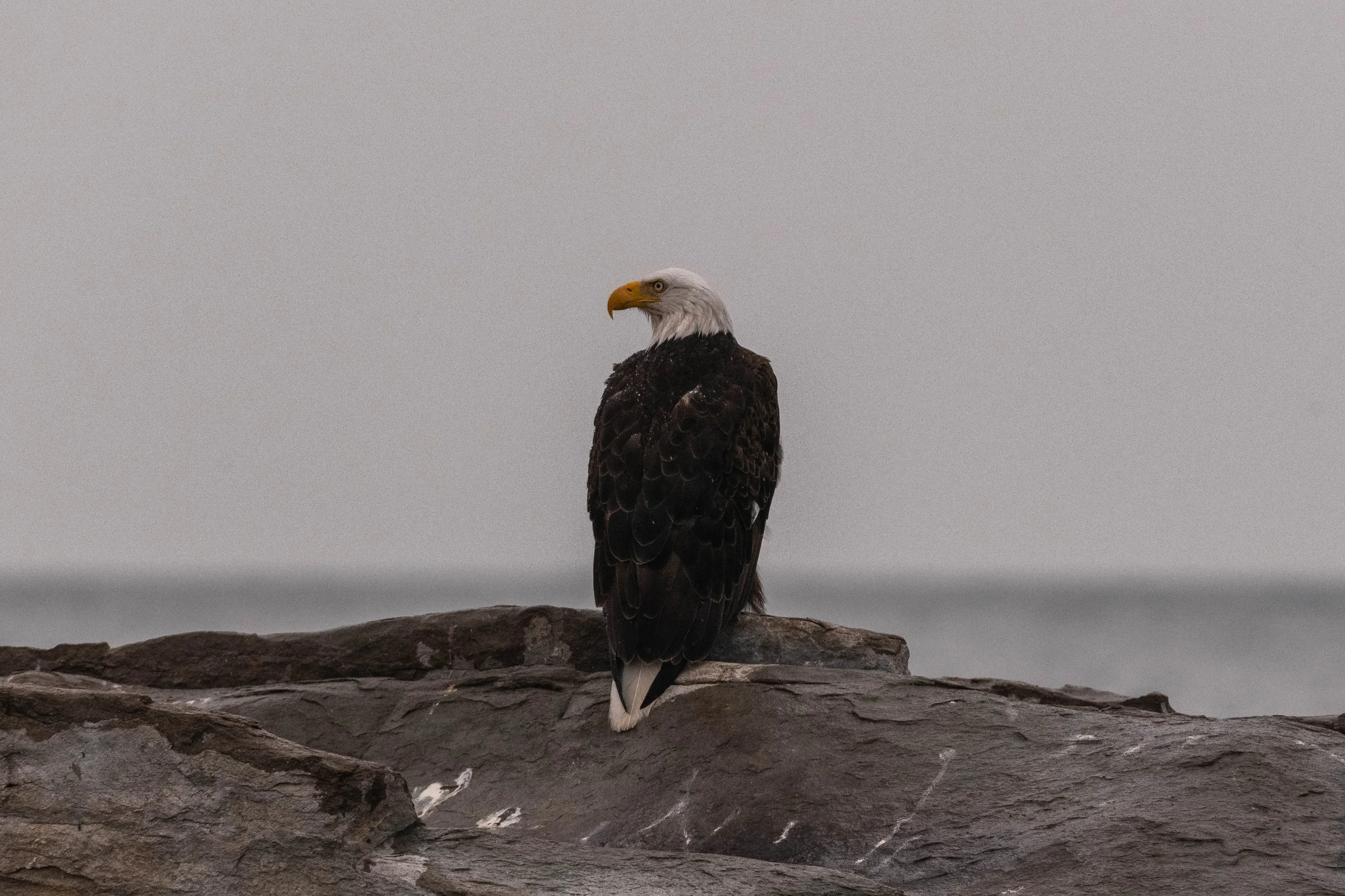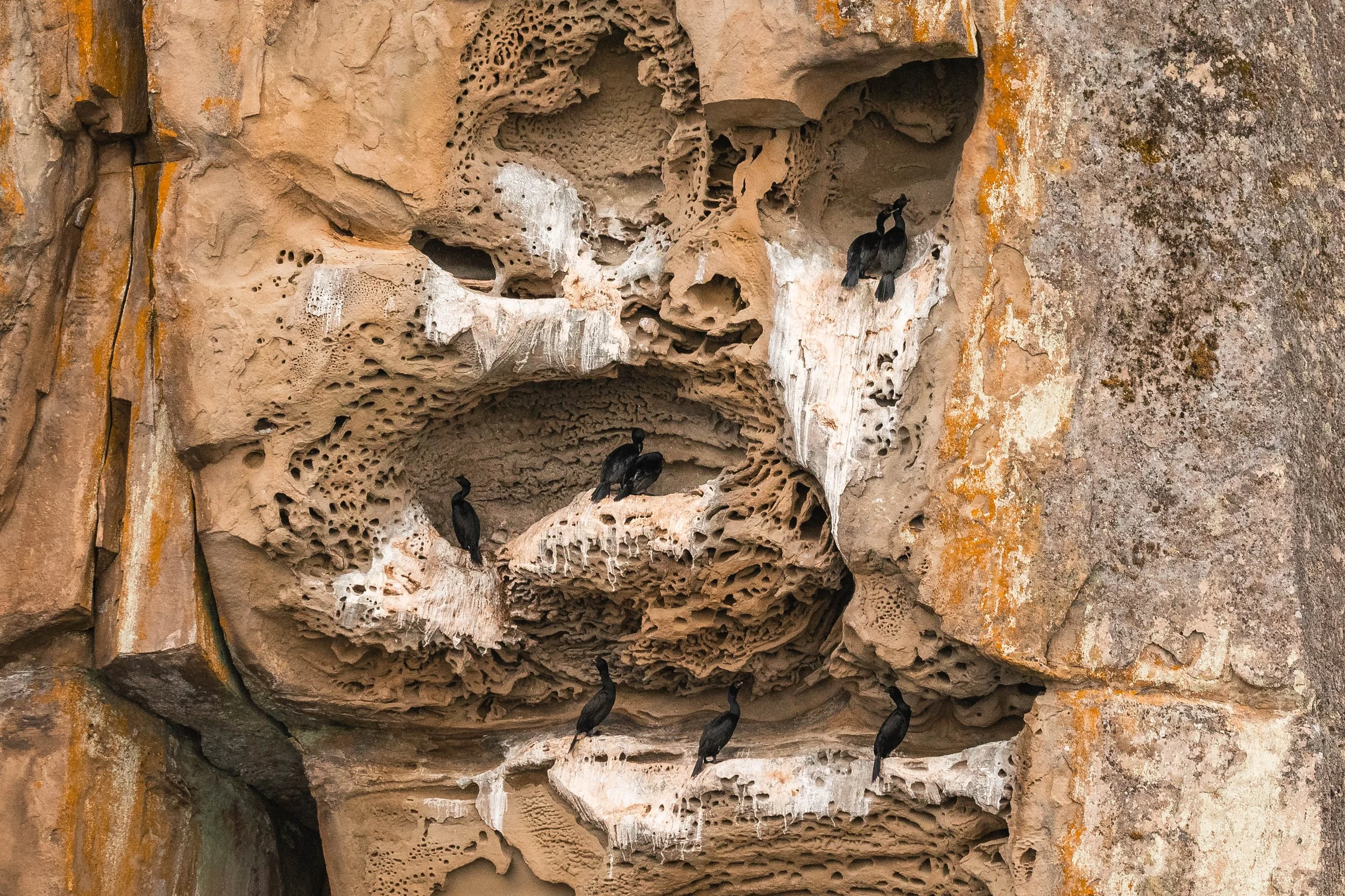July 8, 2025, Charters - Reunited and it feels so good!
We had a classic moody West Coast day for our charters aboard Keta, our open boat, and Kula, our semi-covered vessel. We pushed off the dock and headed into the Strait of Georgia, where more often than not, we can spot a humpback or two feeding. We’ve developed a theory that our humpbacks tend to linger in the Strait, staying close to or directly within the busy shipping lanes. While shipping lanes are typically associated with commercial marine traffic, they can also act as unexpected hotspots of ocean productivity. As large vessels pass through, their massive propellers stir up sediments from the seafloor and mix deeper, cooler layers of water with the surface. This mechanical mixing increases oxygen levels and redistributes nutrients, especially in areas with shallow banks like Halibut Bank. The result is a localized upwelling that boosts plankton growth, fueling the very foundation of the marine food chain.
This surge in plankton attracts small schooling fish like herring and anchovies, which in turn draw in larger predators. Humpback whales are frequently spotted in these zones, taking advantage of the abundant prey. They are often seen lunge feeding, propelling themselves upward with mouths wide open to engulf krill or fish, which become more concentrated and predictable in these nutrient-rich areas. So, although shipping lanes are hubs of human activity, they inadvertently serve as feeding grounds for some of the ocean’s most majestic creatures.
It wasn’t long before we spotted a blow, helped by the dark skies, which made the bushy exhalations stand out starkly against the backdrop. It was Barracuda (BCY0649) and Anvil (BCZ0410), a pair of females we’ve frequently observed spending time together this season. We’ve started to form another theory about these two. For many years, humpbacks were believed to be largely solitary animals, only coming together briefly to mate or feed. But recent observations have challenged this assumption. We're now seeing humpbacks form social bonds, sometimes returning to the same companions year after year, especially in feeding grounds. These findings suggest that their social lives may be more intricate than we once thought. Interestingly, this afternoon we found Anvil with another humpback, not Barracuda, but her 2024 calf, Rubber Ducky (2024 calf of Anvil), who had returned to her side!
Humpback whale calves stay closely bonded with their mothers for the first year of life, relying on them for nourishment, protection, and guidance. During this period, mothers provide rich milk to support rapid growth and teach vital survival skills, such as navigation, feeding, and predator awareness. While most calves begin to branch off and wean between 10 to 12 months of age, we've seen some become independent as early as five months. By the time they return to the feeding grounds the following year, many have fully separated from their mothers. So, we were thrilled to see this mother-calf reunion out on the water!
Returning to our theory about Barracuda and Anvil, we suspect they may both be pregnant. This idea stems from observations in past seasons, where we’ve documented pregnant females spending more time together. We’ve affectionately nicknamed this recurring pattern the “Pregnant Mamas Club.” Keep an eye on next year’s updates to see if we’re right!
After some quality time in the Strait with our humpbacks, we also encountered a few more members of the Salish Sea community.
Out on the water, it’s not just the whales that captivate us, our coastal ecosystems are vibrant and full of life. Sightings of Steller Sea Lions, harbour seals, bald eagles, and cormorants regularly add to the richness of the experience. Each of these animals has its own fascinating behaviours and family dynamics, offering a deeper appreciation for life along the rugged Pacific coastline.
Steller Sea Lions are often seen hauled out in large, noisy groups on rocky islands and outcrops. Males are enormous and highly territorial during the breeding season, while females give birth to a single pup in early summer. These pups typically stay with their mothers for up to a year, nursing and gradually learning to forage and dive. It's common to see young sea lions sticking close to their mom while they develop their underwater skills.
Harbour seals, in contrast, are more solitary and much quieter than sea lions. They give birth in late spring and summer, and their pups are remarkably independent, able to swim within hours of being born. However, the bond between mother and pup, though brief, is strong. Harbour seal pups are usually weaned within three to six weeks, during which time they rely on rich milk and stay close as they gain confidence in the water.
Above the shoreline or soaring overhead, bald eagles are a majestic sight. These powerful birds of prey typically mate for life and return to the same nest each year. During nesting season, they raise one to three chicks, which fledge at around 10 to 12 weeks old. However, fledglings often linger nearby for several more weeks, learning to hunt and occasionally coaxing a few more meals from their parents before becoming fully independent.
Cormorants, with their sleek black feathers and striking wing-spreading posture, are a common coastal bird. They are excellent divers, hunting fish below the surface, and are often seen resting and drying their wings on rocky outcrops. Cormorants nest in colonies, laying several eggs in cliffside nests. Both parents share incubation duties, and the chicks remain in the nest for five to six weeks before fledging. Even after leaving the nest, they often stay close as they refine their fishing techniques.
Together, these species create a dynamic and diverse coastal community, each one contributing to the intricate balance of life along the West Coast. From whales to sea lions to seabirds, there's always something remarkable to witness out on the Salish Sea.
Enjoy the photos below taken by Aly Kohlman and Jordan Robinson.
A young buck watching us back. Photo by Aly Kohlman AM.
Kula watching whales! Photo by Jordan Robinson AM.
Keta watching whales! Photo by Aly Kohlman AM.
Anvil with a fluke waterfall. Photo by Aly Kohlman AM.
The underside of Anvil’s tail. Photo by Aly Kohlman AM.
Anvil’s right dorsal. Photo by Aly Kohlman AM.
Anvil’s left dorsal. Photo by Aly Kohlman AM.
Anvil surfacing. Photo by Aly Kohlman AM.
A great fluke from Anvil. Photo by Aly Kohlman AM.
Barracuda’s right dorsal. Photo by Aly Kohlman AM.
Anvil heading towards us. Photo by Jordan Robinson AM.
A big blow! Photo by Jordan Robinson AM.
Barracuda’s fluke. Photo by Jordan Robinson AM.
Anvil surfacing for a breath with Barracuda in tow. Photo by Jordan Robinson AM.
A huddle of harbour seals. Photo by Aly Kohlman AM.
Harbour seals getting splashed. Photo by Jordan Robinson AM.
A cuddle puddle of Steller Sea Lions. Photo by Jordan Robinson AM.
Not so cuddly when they want a specific spot. Photo by Jordan Robinson AM.
This Steller has everyone yelling now! Photo by Jordan Robinson AM.
A large male Steller. Photo by Aly Kohlman AM.
Two bald eagles disscussing what to have for lunch! Photo by Aly Kohlman AM.
Take off. Photo by Aly Kohlman AM.
Keta. Photo by Aly Kohlman PM.
Kula. Photo by Jordan Robinson PM.
Rubber Ducky surfacing. Photo by Aly Kohlman PM.
Rubber Ducky lung feeding. Photo by Aly Kohlman PM.
Rubber Ducky fluking. Photo by Aly Kohlman PM.
Rubber Ducky. Photo by Jordan Robinson PM.
Anvil fluking. Photo by Jordan Robinson PM.
Harbour seal with her pup. Photo by Aly Kohlman PM.
A majestic bald eagle. Photo by Aly Kohlman PM.
One of the eaglets perched. Photo by Jordan Robinson PM.
Cormorants at the bluffs. Photo by Jordan Robinson PM.
The Gabriola Bluffs with moody West Coast vibes. Photo by Jordan Robinson PM.
Cormorants flapping around. Photo by Jordan Robinson PM.

